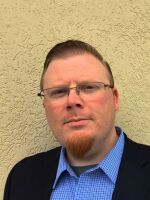It is National Hispanic Heritage Month, and in light of that WCPN has been taking note of political, cultural, and social issues affecting our communities and country. Today we turn to…or turn on..the radio.
A little less than a year ago one of Northeast Ohio’s alternative rock stations switched formats—no more Pearl Jam or The Avett Brothers on 87.7 FM. Instead listeners heard “La Mega,” Northeast Ohio’s* first Spanish-language commercial radio station.
MELENDEZ: “It’s been 9 months, and it’s been a roller coaster. But so far so good.”
Daniel Melendez is program director for Cincinnati-based TSJ Media, putting out Spanish-language newspapers and magazines in the Mid-West US. It also operates three Spanish-language radio stations in Ohio, including La Mega.
MELENDEZ: “People are very receptive. Our core listeners, not only do they listen to the station, not only do they love the station, but they are familiar with our on-air talent, our shows, our events, our promotions.”
Cleveland is a special case when it comes to Spanish-language programming. Unlike TSJ’s other stations in Columbus or Cincinnati, the core audience in Cleveland is not primarily Mexican-American.
MELENDEZ: “You would think there is one huge demographic of Hispanics in Cleveland, but in reality there are many different cultural backgrounds. So when you’re the only station, and you’re trying to have Central Americans, and Mexicans, and Puerto Ricans, and Dominicans and Cubans..you have to understand not just because it’s the same language, it’s the same music…because it’s not.”
MEMO: “One of the first things that we did when we opened up the bakery was buy that radio, because we knew that people were listening to La Mega. And people love it.”
Ivan Memo is the manager of Las Villas Deli and Pastry, which specializes in Puerto Rican foods. La Mega could be heard from the radio during the lunch hour.
MEMO: “I’m, Puerto Rican, but listening to La Mega all day long, you can listen to Mexican, Colombian music, all types of music..and that’s a good thing, because it makes the Hispanic community come closer.“
RUIZ: “As they get to know the community, and as they bring in DJs and hosts who are from Cleveland, you are starting to see them penetrate the community more.”
Victor Ruiz is the executive director of Esperanza, an Ohio organization offering mentoring, tutoring, and scholarships for Hispanic students and families.
RUIZ: “So they are right, when they do live remotes, or when you look on Facebook, or when you talk to people, people know La Mega is there within our community.”
Ruiz says Esperanza was one of the first groups to advertise with La Mega, and the station’s existence has changed Esperanza’s marketing strategy. Now there’s an outlet with broad reach, providing information for a specific community.
CASILLAS: “It’s almost like an on-air bulletin board. Sometimes I refer to it as an on-air Craig’s List. If you have some kind of distance from a homeland, it seems like this acoustic ally to have Spanish-language radio playing in the background.”
Dolores Inés Casillas is an Associate Professor in Chicana and Chicano Studies at UC Santa Barbara. She says Spanish-speaking stations like La Mega cropping up across the country, due in part to rising numbers of Spanish-speakers, but also the search for alternate perspectives on the news of the day.
If you just look at ratings, it’s hard to say how well La Mega is doing. Its average daily listenership in July was 6,800 according to Arbitron, compared to the top Clear Channel station nearing 200,000.
But Professor Casillas says it is hard for ratings measurements to tell the story in Hispanic communities. Station influence is shown more in how many people come to community events, or how many bumper stickers are seen on cars. And just based on the number of stations cropping up in the US, Casillas says we may now be in a Golden Age of Spanish-language radio.
MELENDEZ: “If you go into Puerto Rican restaurants, if you go into the bakeries, a couple of the stores...they have us full blast on their speaker system.”
La Mega’s program Director Daniel Melendez says La Mega has gone beyond expectations, even if that doesn’t mean top-of-the-chart ratings. He measures success in the response his advertisers get, and the turn-out at local station events, and from that he says he can’t complain. But there is still more work to do.




